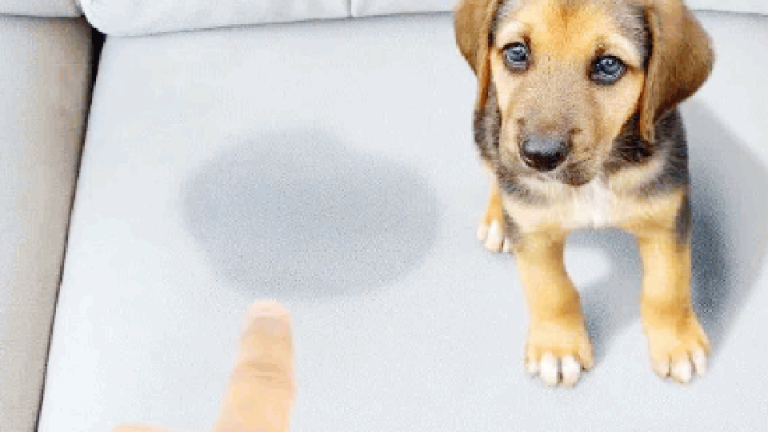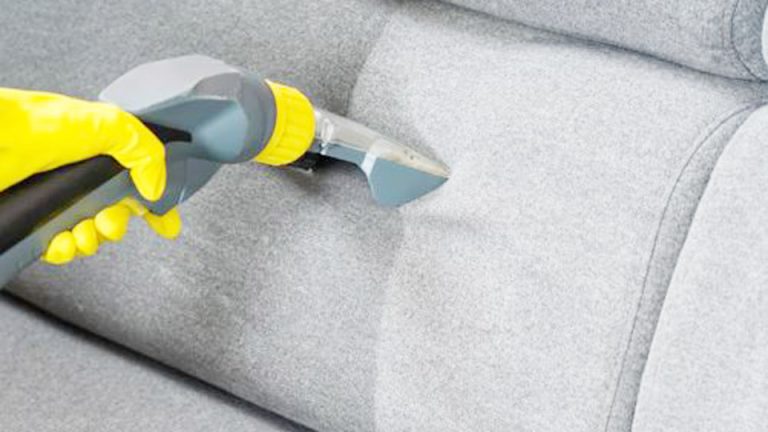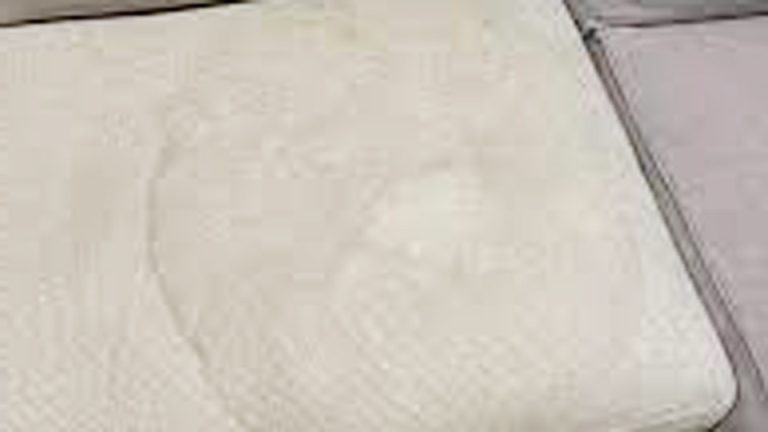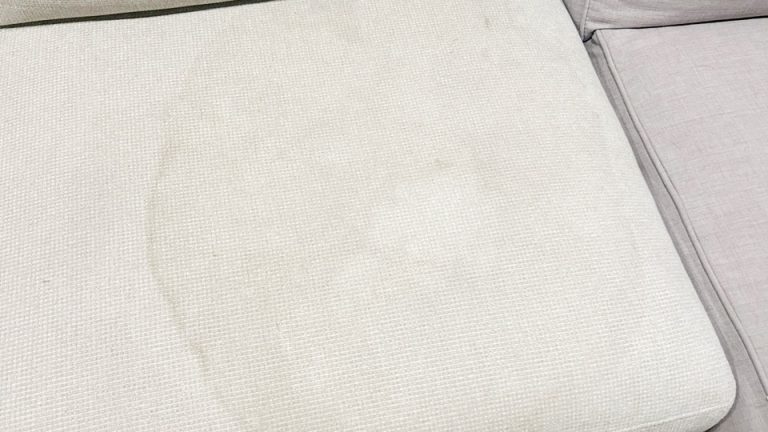As a professional cleaner with over a decade of experience and a pet owner myself, I’ve tackled my fair share of couch disasters. One of the toughest? Figuring out how to get old pee smell out of a couch.
Whether it’s from a puppy, a toddler, or an unexpected accident, that lingering odor can make your living room feel less than inviting. I’ve been there and walking into my own home and cringing at the faint whiff of an old pet mishap on my favorite sofa.
After years of trial and error, I’ve perfected a few methods that really work. Let me share my go-to solutions, practical tips, and personal stories to help you banish that smell for good.
Cleaning a couch isn’t just about masking odors—it’s about eliminating them at the source. My methods use simple, safe ingredients you probably already have at home. They’re budget-friendly, effective, and won’t harm your couch or your family. Let’s dive into how I tackle this problem step by step, so you can enjoy a fresh, clean sofa again.
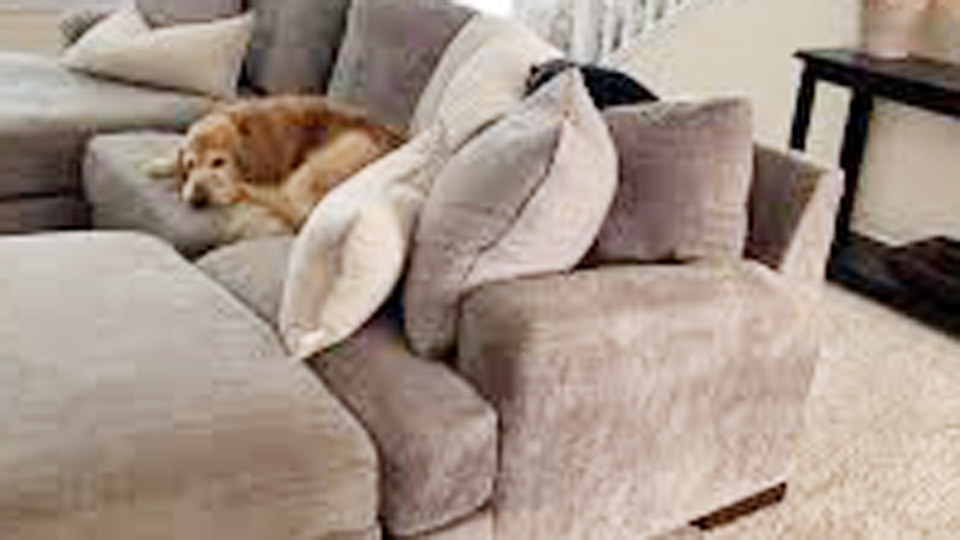
Image by reddit
Why Old Pee Smells Are So Stubborn
I’ll never forget the time I adopted my rescue dog, Max. He was adorable but came with a surprise: a couch that reeked of old urine from his previous home. That smell was stubborn! Pee soaks deep into couch fibers, and over time, the odor gets trapped in the upholstery.
Bacteria and enzymes in urine break down, creating that unmistakable stench. If not cleaned properly, it lingers, especially in humid weather or when you plop down on the couch.
Store-bought sprays often just mask the smell, and harsh chemicals can damage delicate fabrics. That’s why I turned to natural, homemade solutions. They’re gentler, cheaper, and, in my experience, more effective when done right. Here’s how I do it.
My Go-To Methods for Removing Old Pee Smell
Over the years, I’ve developed three reliable methods to get rid of old pee smells from couches. Each one works for different situations, depending on the couch material and how bad the odor is. I’ve used these in my own home and for clients, and they’ve never let me down.
Method 1: Baking Soda and Essential Oil Deep Clean
This is my favorite method for most couches, especially fabric ones. Baking soda is a natural odor absorber, and essential oils add a fresh scent without overwhelming the room. I discovered this trick when Max had an accident on my microfiber sofa, and I was desperate to save it.
What You’ll Need:
- 1 cup baking soda
- 10 drops lavender or tea tree essential oil
- A vacuum with an upholstery attachment
- A soft brush or old toothbrush
- A clean spray bottle with water
How to Do It:
- Sprinkle baking soda generously over the affected area. I cover the entire spot and a bit beyond to catch any hidden odor.
- Add the essential oil drops to the baking soda. I use lavender for its calming scent or tea tree for its antibacterial properties.
- Gently rub the baking soda into the fabric with a soft brush. This helps it penetrate deeper.
- Let it sit for at least 8 hours—overnight is best. I usually do this before bed so it can work its magic while I sleep.
- Vacuum the baking soda thoroughly. I go over the area twice to ensure I get it all.
- Mist the spot lightly with water from the spray bottle, then blot with a clean cloth to remove any residue.
My Experience: The first time I tried this, I was skeptical. But after vacuuming up the baking soda, the pee smell was gone, and my couch smelled like a lavender field. My guests had no idea Max had ever had an accident!
Method 2: Hydrogen Peroxide and Dish Soap Solution
For tougher, older stains that have really set in, I turn to this method. Hydrogen peroxide is great at breaking down the enzymes in urine, and dish soap tackles any oily residue. I used this on a client’s velvet couch that had been neglected for months.
What You’ll Need:
- 1 cup 3% hydrogen peroxide
- 1 teaspoon mild dish soap (I use Dawn)
- 1 cup warm water
- A clean spray bottle
- A white microfiber cloth (to avoid color transfer)
- A fan (optional, for faster drying)
How to Do It:
- Mix the hydrogen peroxide, dish soap, and warm water in the spray bottle. Shake gently to combine.
- Test a small, hidden area of the couch first. I once skipped this step and slightly lightened a dark fabric—oops!
- Lightly spray the affected area until it’s damp but not soaked. Too much liquid can damage the couch.
- Let it sit for 10 minutes to break down the urine enzymes.
- Blot the area with the microfiber cloth, working from the outside in to avoid spreading the stain.
- Repeat if needed, then let the couch air dry. I set up a fan to speed things up.
My Experience: This method saved a client’s velvet couch that I thought was a lost cause. The smell was completely gone after two rounds, and the fabric looked as good as new. Just be patient and don’t over-wet the couch.
Method 3: Activated Charcoal Odor Eliminator
For couches where the smell is deep in the cushions or hard to pinpoint, activated charcoal is my secret weapon. It absorbs odors like nothing else. I used this when I bought a secondhand leather couch that had a faint pee smell I couldn’t locate.
What You’ll Need:
- Activated charcoal powder or bags (available at pet stores or online)
- A shallow container (for powder)
- A vacuum
- A clean cloth
How to Do It:
- If using powder, sprinkle a thin layer of activated charcoal over the smelly area. For bags, place them directly on or inside the cushion.
- Let it sit for 24–48 hours. I tuck the bags inside the couch cushions and close them up to trap the charcoal.
- Vacuum up the powder or remove the bags.
- Wipe the area with a damp cloth to remove any residue, then dry thoroughly.
My Experience: The leather couch I bought was a steal, but the smell was a dealbreaker. After 48 hours with charcoal bags tucked into the cushions, the odor was gone, and I could finally enjoy my find. It’s a slow method, but it works wonders for tricky smells.
Choosing the Right Method for Your Couch
Not every method works for every couch. Here’s a quick guide based on my experience to help you pick the best one for your situation.
| Couch Material | Best Method | Why It Works | Tips from My Experience |
|---|---|---|---|
| Fabric | Baking Soda and Essential Oil | Absorbs odors and safe for most fabrics like microfiber or cotton. | Vacuum thoroughly to avoid residue. |
| Velvet | Hydrogen Peroxide and Dish Soap | Gentle yet effective for delicate fabrics; removes deep-set odors. | Test first and blot gently to preserve the fabric’s texture. |
| Leather | Activated Charcoal | Non-damaging and absorbs odors without wetting the leather. | Use bags for easier cleanup; avoid powder on leather. |
| Synthetic | Baking Soda or Hydrogen Peroxide | Both handle synthetic fibers well; choose based on odor severity. | Don’t over-wet synthetics—they can hold moisture and smell worse. |
| Mixed Materials | Baking Soda and Essential Oil | Safe for most combos and easy to apply without risking damage. | Spot-test each material to be safe. |
My Tip: Always check your couch’s care label (usually under the cushions) for cleaning codes like “W” (water-based cleaners okay) or “S” (solvent-based only). I learned this after nearly ruining a client’s “S” couch with a water-based cleaner.
Step-by-Step Guide to Tackle Old Pee Smells
No matter which method you choose, the process of cleaning a couch needs care and patience. Here’s how I approach it to get the best results every time.
Identify the Smell’s Source: Sniff around (yes, really!) to pinpoint the affected area. I use a flashlight to spot stains that might be hidden in dark fabrics.
Vacuum First: Remove dust and debris with a vacuum’s upholstery attachment. I once skipped this and ended up with a muddy mess when I applied the cleaner.
Test Your Cleaner: Always test a small, hidden spot first. I learned this the hard way when a cleaner lightened a corner of my navy couch.
Apply Your Chosen Method: Follow the steps for your selected method carefully. Don’t rush—letting cleaners sit is key to breaking down odors.
Blot, Don’t Rub: Rubbing can spread the stain or damage the fabric. I blot gently with a clean cloth, working from the edges inward.
Dry Thoroughly: Use a fan or open windows to speed up drying. Damp couches can develop mildew, which is a whole new problem.
Check for Lingering Odors: After drying, give the couch a sniff test. If the smell persists, repeat the process or try another method.
I once spent an entire Saturday cleaning a client’s sectional sofa. It was tedious, but following these steps made it smell fresh again. Patience pays off!
Common Mistakes to Avoid
I’ve made plenty of cleaning mistakes over the years, and I want to help you avoid them. Here are the biggest pitfalls I’ve seen (and fallen into):
Using Too Much Liquid: Over-wetting a couch can lead to mildew or water stains. I always use a spray bottle for control.
Skipping the Test Patch: I once bleached a small spot on a colorful couch because I didn’t test first. Always test!
Rushing the Process: Odor removal takes time. Letting cleaners sit overnight makes a huge difference.
Using Harsh Chemicals: Strong cleaners can damage fabrics or leave their own smell. Stick to gentle, natural solutions like mine.
Ignoring Deep Cushions: Pee can soak into foam cushions. I always remove and treat them separately if possible.
Why I Prefer Homemade Solutions
Switching to homemade cleaners was a game-changer for me. Not only are they safer for my family and pets, but they’re also kinder to my wallet. Store-bought odor eliminators can cost a fortune, and some left my couch smelling like a chemical factory.
With my recipes, I control the ingredients and the scent. Plus, there’s something satisfying about mixing up a solution and seeing it work like magic.
I remember the first time I used the baking soda method on my couch. I was nervous it wouldn’t work, but when I vacuumed it up and smelled nothing but lavender, I felt like a cleaning wizard. It’s empowering to solve a problem with stuff you already have at home.
Preventing Future Pee Accidents
Once your couch is fresh, you’ll want to keep it that way. Here are my tried-and-true tips for preventing future accidents:
Use a Waterproof Couch Cover: I put a washable cover on my couch when Max was still potty training. It saved me so much stress.
Train Pets Early: Consistent training helped Max learn where to go (and where not to!). Positive reinforcement works wonders.
Keep a Spray Bottle Handy: I keep a small bottle of my hydrogen peroxide mix for quick spot-cleaning after accidents.
Regular Vacuuming: Vacuuming weekly prevents dust and odors from settling in. It’s a small habit with big results.
Air Out the Room: I open windows regularly to keep my living room fresh. Good ventilation helps prevent odors from sticking.
Encouragement for Your Cleaning Journey
Dealing with a smelly couch can feel overwhelming, especially if the odor’s been there for a while. But trust me, you can do this! With a little patience and the right method, your couch can smell fresh and inviting again.
Start with one of my recipes, take it one step at a time, and celebrate the small wins. You’re not just cleaning a couch—you’re creating a home that feels welcoming and cozy.
FAQ
How do I know if the pee smell is coming from the cushions or the frame?
I sniff around the couch, focusing on cushions, seams, and the base. A flashlight helps spot stains. If the cushions are removable, take them off and check inside. The smell is usually strongest at the source.
Can I use these methods on a leather couch?
Yes, but stick to the activated charcoal method. It’s dry and won’t damage leather. I avoid liquid cleaners on leather to prevent cracking or discoloration.
What if the smell comes back after cleaning?
If the odor returns, it’s likely deep in the foam. I repeat the hydrogen peroxide method or use charcoal bags inside the cushions for a few days. Persistence is key!
Are these cleaners safe for kids and pets?
Absolutely. I use these around my dog and kids. Just keep the couch off-limits until it’s dry, and store cleaners out of reach.
How long does it take to get the smell out?
It depends on the method. Baking soda takes 8–24 hours, hydrogen peroxide about an hour per treatment, and charcoal can take 1–2 days. I plan for overnight treatments to be thorough.
Can I use these methods on other furniture?
Yes, I’ve used them on chairs and mattresses with great results. Just check the fabric type and test a small area first to be safe.

